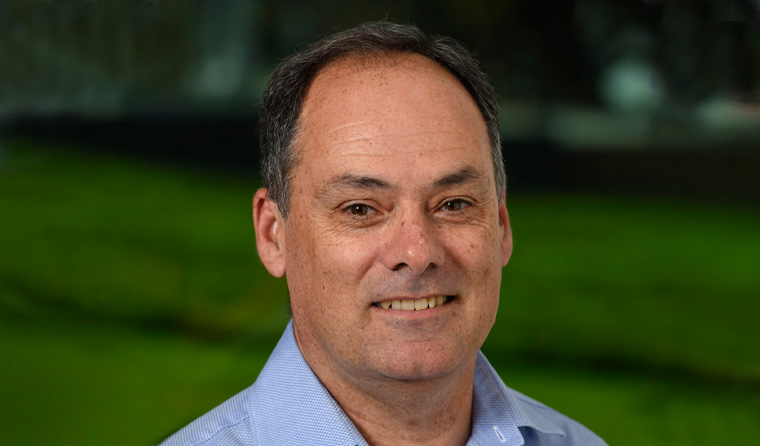News
New research finds link between COVID-19 and lower humidity
If COVID-19 is a seasonal illness, is Australia’s easing of social distancing restrictions going into winter a good idea?
 The humidity is likely to drop in many Australian coastal areas during winter.
The humidity is likely to drop in many Australian coastal areas during winter.
A 1% decrease in humidity can increase the number of COVID-19 cases by 6%.
That was the probability suggested by a new Australian study published in Transboundary and Emerging Diseases, which found an association between lower humidity and an increase in positive cases of COVID-19.
Lead researcher, Professor Michael Ward, an epidemiologist in the School of Veterinary Science at the University of Sydney (USYD), together with his team studied 749 locally acquired cases of COVID-19, mostly in the greater Sydney area of NSW, between 26 February and 31 March.
They matched each patients’ postcode with data from the nearest weather observation station and studied the rainfall, temperature and humidity for the period of January–March.
‘The pandemic in China, Europe and North America happened in winter so we were interested to see if the association between COVID-19 cases and climate was different in Australia in late summer and early autumn,’ Professor Ward told newsGP.
‘Humidity during that period was the most important factor that explained when the cases were occurring. It’s about a two week window before each case.’
Similar findings were noted in research published in Science Direct by USYD and partner institution Fudan University last month, suggesting low humidity promoted transmission of COVID-19 cases in China. There was also an association with low daily temperatures, but this did not emerge as a factor in the Sydney-based research.
Professor Ward says it’s not surprising.
‘When you look at the China study, those temperatures were sort of in the 3–6⁰C temperatures, so they’re pretty cold. In Australia, we don’t get quite as cold, so you might not see such a strong temperature impact and it might still be just humidity driven,’ he said.
‘But we haven’t really got into winter yet in New South Wales.’
The biological theory behind the role of humidity is the same as that with respiratory transmission of other airborne viruses such as influenza.
‘When there is low humidity, there’s not much water vapor in the air. So the air is very dry and that means when someone coughs, particularly an infectious person, you get aerosolised particles in the air,’ Professor Ward said.
‘When the air is dry, those particles are small, so they can stay suspended for much longer in the air.
‘When it’s humid and there’s a lot of water in the air, those particles are quite big and they’re heavy, and they drop fairly quickly. That reduces the potential exposure to other people and transmission.’
 Professor Michael Ward and his team studied 749 locally acquired coronavirus cases, mostly in the greater Sydney area.
Professor Michael Ward and his team studied 749 locally acquired coronavirus cases, mostly in the greater Sydney area.
The theory appears to ring true for the Northern Territory, where to date just 29 cases have been recorded and zero deaths. Similarly in Cairns and Townsville in North Queensland there were a combined total of 58 cases and no fatalities.
But it is hard to say for certain whether the low numbers are due to climate or public health efforts such as social distancing measures and the closure of borders.
Professor Ward says time and more data will tell, but that for countries like Australia that have several different climate zones, it is hard to generalise.
‘While there’s a broad theme here of humidity and temperature, there’s local context of what’s going on,’ he said.
‘Inland Australia, humidity is actually lowest in summer, whereas Sydney along the coast it’s highest in summer but lowest in winter. So even within the same state, there’ll be some regional differences.’
What the research thus far indicates is that heading into winter, populations living in Australia’s southern coastal areas will be at the highest risk.
While Australia’s case numbers remain relatively low, helping to pave the way for the easing of social distancing measures heading into winter, Professor Ward says the research highlights the need to be vigilant.
‘It’s about having that really strong surveillance in place, maintaining hygiene, and restrictions,’ he said.
‘I know they’re easing as we’re going into winter, but keeping in mind if the conditions are becoming conducive to transmission whether there needs to be some sort of tailored restrictions for winter.
‘But it’s a major public health problem in terms of messaging to get across that you have to have different behaviours in summer versus winter – it’s a real challenge for public education.’
Professor Ward and his team are currently studying case data from April and May, while starting to look at regional differences between areas such as Sydney and the Blue Mountains, which are relatively close in proximity but differ climate-wise.
However, if Australia’s community transmission remains low, Professor Ward says researchers focusing on local context may find themselves in the ironic situation of not having enough data to assess the bigger picture.
‘There were an extra 450 cases in April and May, so it’s a little bit over half of what it was in February and March,’ he said.
‘It’s still plenty of cases to look at, but then after that we’re getting ones and twos in terms of locally acquired cases, which really, in the middle of winter if that continues, it’s just not enough cases to see if there’s really a climatic effect going on.
‘The public health intervention has overwhelmed any underlying climatic effects – which is good, but it’s not good for research.’
The RACGP has more information on coronavirus available on its website.
Log in below to join the conversation.
coronavirus COVID-19 humidity research
newsGP weekly poll
How often do patients ask you about weight-loss medications such as semaglutide or tirzepatide?